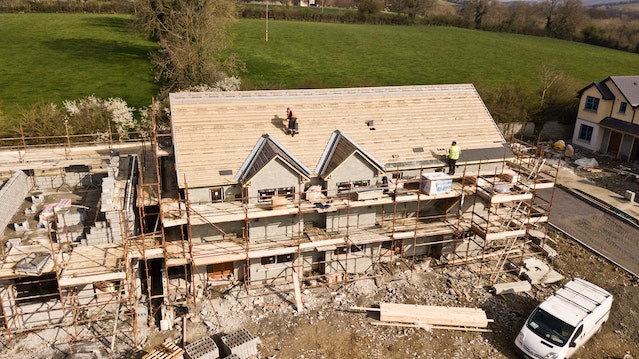Slab Foundation Purposes and Advantages
November 3, 2022A Slab Foundation like the service that slab foundation Killeen TX offer is a building foundation that is constructed with concrete blocks. It is an inexpensive way to build a foundation. However, it can provide minimal protection from storms and frost. Whether you’re building a house or a barn, you’ll want to be sure to choose the right foundation type for your needs.
Raised Slab Foundations
Raised slab foundations are constructed on top of a concrete slab. They are designed to resist the effects of frost. These foundations are most commonly used in environments prone to ice and include heavy-duty reinforcements and footings that extend far past the home’s perimeter and into the yard.
They are much more secure than crawl spaces. They are usually at least 24 inches thick and are more stable than crawl spaces. They are also less likely to shift than standard foundations. However, they are not suitable for areas with frigid temperatures. Those living in these regions should avoid planting trees with invasive root systems since these can damage the slab foundation.
Raised slab foundations can be either on-grade or off-grade. On-grade slabs are typically made of concrete or rock with mesh wiring and footings to support them. Floating slabs are generally used for sheds and other structures but not in homes.
Concrete Slab foundations
A concrete slab foundation is much cheaper to build than pier and beam foundations. It is relatively easy to construct as it only requires one pour. It does not need a crawlspace and can be built in just a few days. Preparing the ground for the slab foundation well before construction is important.
Concrete slab foundations are commonly used to build new homes. They consist of a concrete slab several inches thick that cascades to form an integral footing. These foundations can also be less expensive to pour than T-foundations. They are reinforced by steel rods and drainage pipes. Typically, homes are constructed directly on a concrete slab foundation.
Easy to Install
Slab Foundations are an excellent option for many homeowners because of their ease of installation and use. They are relatively inexpensive and ideal for those who don’t have the time to do a full foundation. These foundations are also easier to maintain and repair than foundations built on a foundation wall. To better understand the installation process, let’s look at two different slab foundations: basements and slab on grade. A basement or slab on grade foundation starts with a concrete footing and an eight-inch thick foundation wall that extends between the footing and the slab. This foundation wall is then framed with inch boards to provide structural support. The footings are then dug three feet outside the perimeter of the home. After the floors are dug, builders use post-tension cables and steel
Plumbing pipes often run under the concrete slab foundation. This can cause major problems if there is a leak in the pipes. Plumbing leaks can be difficult to diagnose until you notice a water bill or water level rises. Slab foundations are also not ideal for retroactive basement or crawlspace additions.
Offer Minimal Protection from Storms
Slab foundations are the least effective way to protect your home from inclement weather. Fortunately, there are many options to increase the protection of your home. These methods include piling materials or a continuous load path connecting the foundation to the first floor, second floor, and roof. As a result, these homes are less likely to be damaged by inclement weather or storms.
Unlike pier and beam systems, slab foundations offer little protection against storms or flooding. They are also susceptible to frost damage. Nevertheless, proper slab insulation levels will help prevent moisture condensation and comfort. Additionally, extra insulation can be added to meet special requirements and energy codes.
Allow More Excellent Options for Remodeling
The main disadvantage of slab foundations is that they do not provide much space for storage. They are low to the ground, and the only options for storage are in the crawl space. These spaces are limited and prone to damage due to moisture and pests. In addition, slab foundations do not allow retroactive basement or crawl space additions.
Slab foundations have several benefits, including low maintenance. The construction process is also more convenient. Unlike foundations that require extensive excavation, slab foundations require only minimal preparation. However, when a problem does arise, this foundation type requires more labor.



